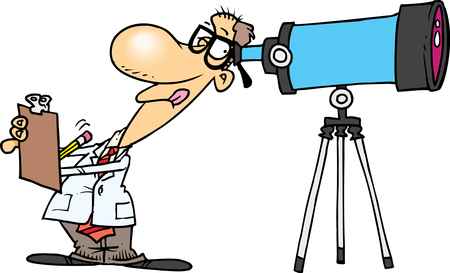Everyone talks about how visually stunning it is when the
darkened Moon fully covers the face
of the Sun in a total solar eclipse. And
indeed, it is! But there are other
unusual, truly strange happenings
that occur when the Moon passes in front of the Sun. If you
aren’t prepared to look for them, some of these weird phenomena are so fleeting
that you can miss them. Following are
descriptions of a number of those novel occurrences to be looked for on August 21st.
Long before totality (when the Moon is only covering part of
the Sun’s face), go to a nearby tree and look in the shade of the tree’s
shadow. You will see hundreds
of crescent images of the partially covered Sun all over the ground! In fact, this is a safe way to view all the
partial phases of the eclipse without harming your eyes. Where do all these many images come
from? The gaps between the tree’s leaves
act like a pinhole camera by projecting the Sun’s image on the ground. Here is a photo that was shot of such a tree
shadow during a previous solar eclipse:
(Above image credit and copyright Elisa Israel)
Anywhere from 60 to 90 seconds before totality or just after
totality ends, closely look at any flat light-colored or white surfaces around
you. You may see a very strange
sight. At such times, dark lines called shadow
bands may be seen racing back and forth across the surfaces. These shadowy lines are caused by sunlight
peeking around mountains and through valleys around the outer rim of the Moon,
while turbulence in the air makes them appear to shift position. To see a video of eclipse shadow bands, go
here: https://www.youtube.com/watch?v=f_XMnU7Ad40
In the minutes before totality, all of your surroundings
will appear dimly lit in a very strange and different way from what you
experience at sunrise or sunset. Everything
will seem somewhat similar to what you see when you wear very dark sunglasses,
but with a kind of surreal sheen that can’t be described adequately.
As soon as the Moon entirely covers the Sun and causes the
sky to completely blacken, the air will instantly chill -- perhaps by as much
as 20 degrees Fahrenheit. Animals will
become confused. Bats may fly around
thinking it is night. Birds may go to
roost. Crickets or cicadas may begin to
chirp.
If the land is flat for miles around your location or you
are on a mountain top, you will be able to see the darkest part of the Moon’s
shadow (called the umbra) racing across the ground towards you just before
totality and away from you afterwards.
Here is video of the approaching and leaving umbra as seen from an
airplane: https://www.youtube.com/watch?v=InlUONyIpdM
An instant before the Sun’s disk is completely covered by
the Moon, you should experience the visually stunning diamond ring effect. The slight bit of Sun remaining will give the
impression of a brilliant diamond with the ring being a faint glow around the
darkened Moon. Some images of the
diamond ring effect can be seen at this link: https://sunstopper.wordpress.com/tag/diamond-ring-effect/
IMPORTANT NOTE: The brief
few minutes of totality is the only time it is safe to look directly at the Sun
with no eye protection. If you are
wearing special eclipse glasses, take them off when the Moon completely covers
the Sun. But be sure to put them back on
if you continue looking at the sun as soon as totality is finished.
It will become dark as night during totality. The stars will pop out and you will see two
very bright points of light near the Sun. They are really the planets Venus and
Mercury. Most people never get to see
Mercury because it is usually so close to the Sun that it is blotted out by the
Sun’s glare.
Mars and Jupiter will make an appearance. Those two planets will seem to be near the Sun, when in reality they will be much farther
away on the far opposite sides of their orbits.
In total, 4 of the 5 planets that don’t require a telescope can be seen
during the eclipse.
Sirius, the Dog Star, will show itself as the
very bright star to the southwest of the Sun.
In fact Sirius is the second brightest star in our sky after the Sun.
If we are lucky, there will be eruptions from the Sun that
cannot be seen at any other time. These
eruptions are called prominences and will glow a bright
beautiful ruby red color. Go here to see
a photo of red prominence eruptions during an eclipse: http://county10.com/will-wildlife-be-fooled-into-bedding-down-for-the-night-during-the-eclipse/
The bluish white glowing corona (outer atmosphere of the
Sun) is made of charged hydrogen atoms; AKA plasma. During totality, the corona allows us to see
the beautiful structure of the Sun’s powerful magnetic field as the plasma is
pulled by magnetism into graceful curving field lines. Check out this gorgeous corona photo: http://www.zam.fme.vutbr.cz/~druck/eclipse/Ecl2013g/TSE_2013wa_ed/0-info.htm.
As pretty as this image is, no photo can
capture the almost ethereal fluorescent hue that you will see when looking
directly at the corona. Also, notice
that you can see red prominences in this image near the bottom of the Sun.
I hope this description of strange eclipse phenomena has
piqued your interest and raised your excitement level about the upcoming total
solar eclipse. Remember that the Anderson
Jockey Lot will have the longest running totality period of any location along
the I-85 corridor and U.S. Highway 29.
See you there!
For more information contact me (Rick Boozer) by email at topastro@singularsci.com.


